- The mission of Paradise Valley Community College is to educate the whole person and to serve our students and our communities by providing learning opportunities that are designed to help them achieve their goals.
School Highlights
Paradise Valley Community College serves 9,156 students (26% of students are full-time).
The college's student:teacher ratio of 21:1 is lower than the state community college average of 23:1.
Minority enrollment is 47% of the student body (majority Hispanic), which is less than the state average of 61%.
Quick Stats (2025)
- Enrollment: 9,156 students
- In-state tuition: $2,046
- Out-state tuition: $7,830
- Student:teacher ratio: 21:1
- Minority enrollment: 47%
- Source: Integrated Postsecondary Education Data System (IPEDS)
Top Rankings
Paradise Valley Community College ranks among the top 20% of public schools in Arizona for:
Category
Attribute
Affordability
Debt For Students
School Overview
The teacher population of 436 teachers has stayed relatively flat over five years.
Paradise Valley Community College
(AZ) Community College Avg.
Carnegie Classification
Associate's Colleges: High Transfer-Mixed Traditional/Nontraditional
Baccalaureate / Associates Colleges
Institution Level
Four or more years
At least 2 but less than 4 years
Institution Control
Public
Private, for profit
Total Faculty
436 staff
296 staff
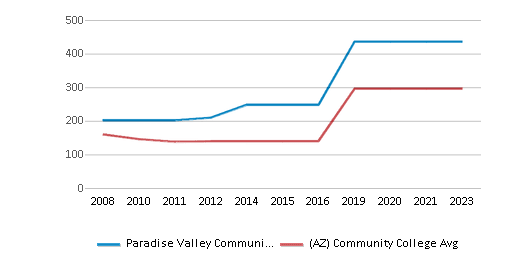
School Calendar
Student Body
The student population of Paradise Valley Community College has grown by 15% over five years.
The student:teacher ratio of 21:1 has increased from 15:1 over five years.
The Paradise Valley Community College diversity score of 0.63 is less than the state average of 0.71. The school's diversity has stayed relatively flat over five years.
Total Enrollment
9,156 students
3,009 students
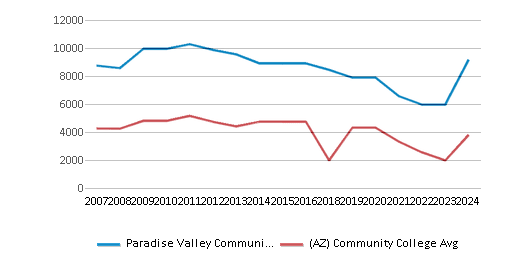
Student : Teacher Ratio
21:1
23:1
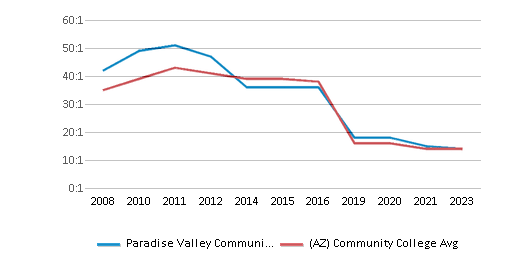
# Full-Time Students
2,409 students
1,238 students
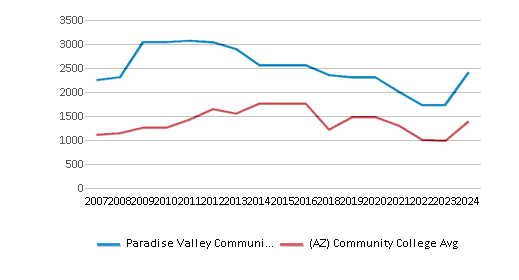
# Part-Time Students
6,747 students
4,184 students
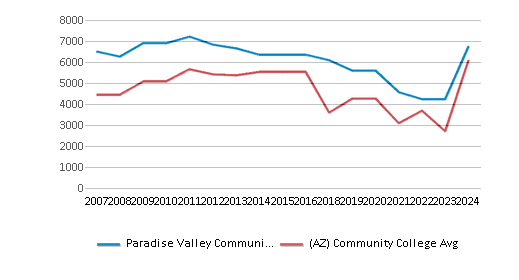
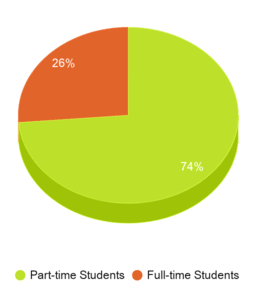
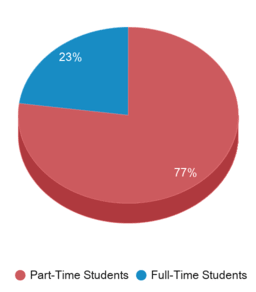
# Enrollment Undergraduate
915 students
339 students
# Full-Time Undergraduate Students
2,409 students
1,238 students
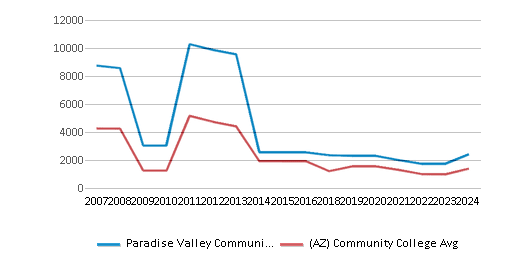
# Full-Time Graduate Students
n/a
66 students
# Part-Time Undergraduate Students
6,747 students
4,387 students
# Part-Time Graduate Students
n/a
11 students
Total Dormitory Capacity
n/a
250 students
% American Indian/Alaskan
1%
3%
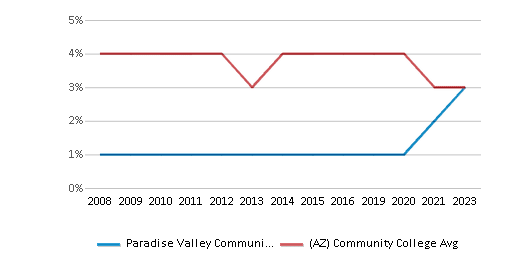
% Asian
4%
4%

% Hispanic
29%
36%

% Black
4%
7%

% White
53%
39%

% Hawaiian
n/a
2%

% Two or more races
5%
4%
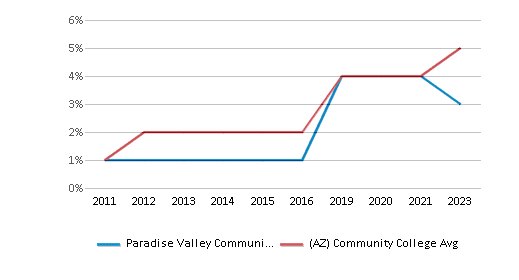
% Non Resident races
1%
1%
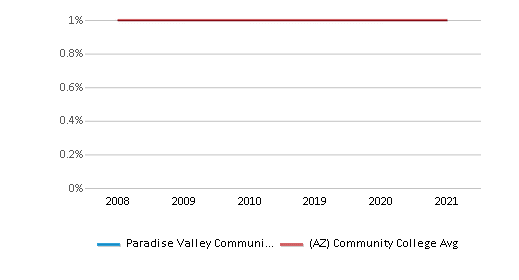
% Unknown races
3%
4%
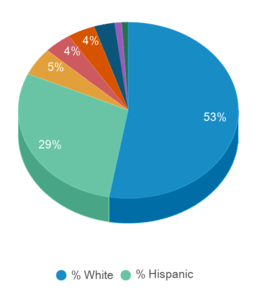
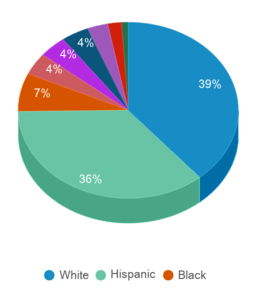
Diversity Score
0.63
0.71
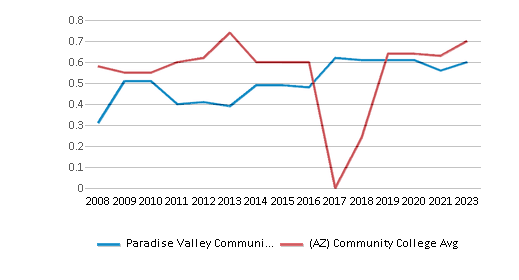
College Completion Rate (Students who graduate in less than 4 years)
0.1295%
0.4914%
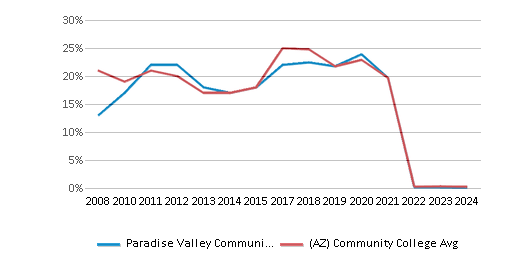
College Completion Rate (Students who graduate in 4 years or more than 4 years)
n/a
0.6%
Average Graduate Earnings (10 Years)
$38,100
$32,900
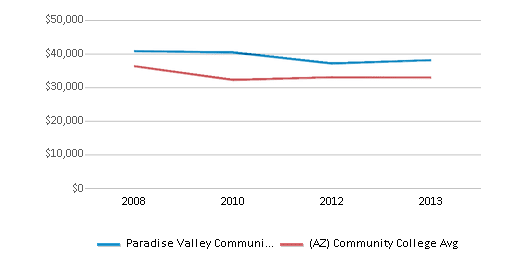
Tuition and Acceptance Rate
The public in-state tuition of $2,046 is more than the state average of $1,876. The in-state tuition has stayed relatively flat over four years.
The public out-state tuition of $7,830 is more than the state average of $7,132. The out-state tuition has stayed relatively flat over four years.
In-State Tuition Fees
$2,046
$1,876
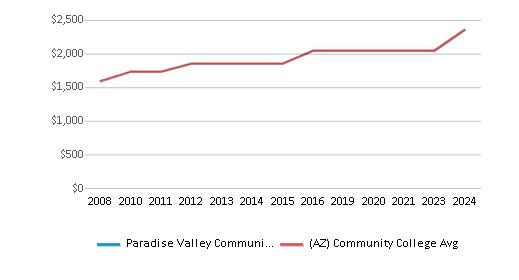
Out-State Tuition Fees
$7,830
$7,132
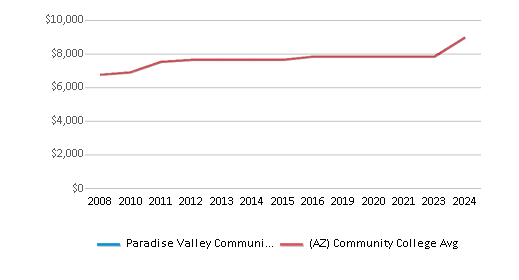
% Students Receiving Some Financial Aid
67%
82%
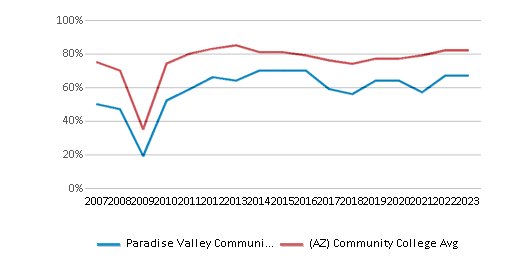
Median Debt for Graduates
$6,500
$9,500
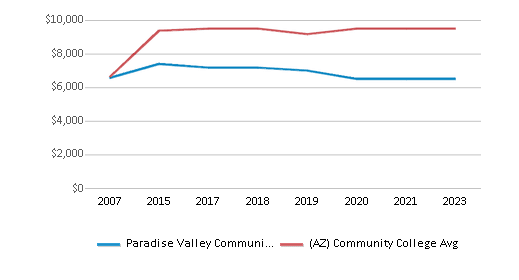
Median Debt for Dropouts
$3,914
$4,750
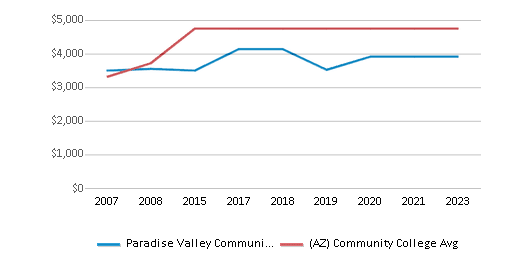
Acceptance Rate
n/a
100%
Source: 2024 (or latest year available) Integrated Postsecondary Education Data System (IPEDS)
School Notes
- Paradise Valley Community College is one of ten colleges, two skill centers, and multiple satellite locations, which comprise the Maricopa County Community College District located throughout metropolitan Phoenix, Arizona. The District was established in 1962, with a single college and has since grown to serve over 277,000 students in credit and non-credit programs making it the largest provider of post-secondary education in the state of Arizona. Today, the district's colleges and centers offer comprehensive educational programs in professional, occupational, special interest, and continuing education curricula to serve the needs of the rapidly growing county area. Founded in 1985, Paradise Valley Community College has grown from a per-semester enrollment in 1987 of 3,700 to over 7,800 today. PVCC provides diverse learning opportunities including University transfer education, General education, Developmental education, Continuing education, Community education, Workforce development, Student development, Honors education, Global engagement and Civic responsibility. As one of ten Maricopa County Community Colleges, PVCC is accredited by the Higher Learning Commission (HLC), a commission of the North Central Association.
Frequently Asked Questions
How much does Paradise Valley Community College cost?
Paradise Valley Community College's tuition is approximately $2,046 for In-State students and $7,830 for Out-State students.
What is Paradise Valley Community College's ranking?
Paradise Valley Community College ranks among the top 20% of community college in Arizona for: Least expensive tuition and Least debt for graduating students.
In what neighborhood is Paradise Valley Community College located?
Paradise Valley Community College is located in the Paradise Valley Village neighborhood of Phoenix, AZ.
Recent Articles

Obtaining Your Bachelor's Degree at a Community College
Explore the evolving landscape of community colleges offering bachelor's degrees, addressing affordability, accessibility, and workforce needs.

A to Z of Community College Certificates and Courses
From business and healthcare to technology and skilled trades, the article showcases the breadth of options available to students seeking to enhance their knowledge, develop new skills, or pursue career advancement.

What is a Community College?
This comprehensive guide explains what a community college is, its history, and its role in higher education. It covers the types of programs offered, differences from four-year colleges, benefits of attending, and important considerations for prospective students, providing valuable insights for those exploring educational options.









